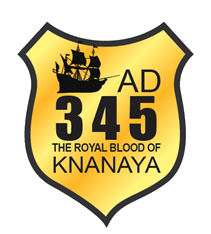



The Knanaya Community, also known as the 'Southists' or 'Thekkumbhagar', traces its origin back to a Jewish-Christian immigrant community. They are the descendants of the migrants who arrived in India from Mesopotamia under the leadership of Thomas of Cana in the year AD 345 with a bishop, some priests, and 72 families belonging to 7 tribes (Bagi, Belkuth, Hadi, Kujalig, Koja, Mugmuth, Thegmuth). Due to the circumstances leading to the economic and political changes of the fourth century, these colonists were welcomed by the then king Cheraman Perumal. He provided them permission to settle down at Kodungallur. They were conferred with 72 royal privileges consisting of social, economic, and religious rights. It was recorded on copper plates (Knai Thomman Chepped) and forms the root for the current social status enjoyed by the Christians of Kerala.
In the caste-ridden social system of India, those Jewish Christian immigrants from Southern Mesopotamia and their descendants comfortably remained an endogamous community. Members of the Knanaya community are born of/to both Knanaya parents. If married, his/her spouse should also be born of/to both Knanaya parents. Residing on the southern portion of Kodungallur, they came to be known as the 'Southists' or 'Thekkumbhagar' in distinction from Northist Christians, who were descendants of the native Indians, converted by Apostle St Thomas and were living in the northern portion of the town. Due to the political unrest in the later centuries, the 'Thekkumbhagar' were forced to migrate from Kodungallur to some other parts of Kerala. Before the Synod of Udayamperoor in 1599, the Knanaites had five churches of their own: Udayamperoor, Kaduthuruthy, Kottayam, Chunkom, and Kallissery. In some other churches, they had one half the shares along with other Syrians (Northists). So Knanaites were also called 'Ancharapallikkar' (owners of five and a half churches). After the Koonan Kurishu Satyam in 1653, the Knanaya split into two groups: the Knanaya Catholics and the Knanaya Jacobites. A large number of the Knanaya people have now taken up domicile overseas, especially in Central and North India, North America, Europe, Australia, New Zealand, Middle East, South Africa, etc. These people, wherever they are, continue to maintain their Knanaya customs and traditions, even after their migration, along with their unwavering communion with the Christian faith.
The Knanayites are an ethnic community having well-defined cultural practices. The Knanaya way of life consists of a social philosophy with well-defined socio-religious practices, family values, community bond, faithfulness to ancestral traditions, and inculturation into the cultural scenario of the local region without sacrificing their self-identity. It is one of the oldest migrated ethnic groups, which successfully preserves and transmits its culture and traditions in the land of migration for the last 1700 years without getting dissolved.


